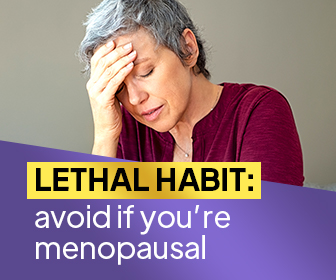If you’ve ever wondered, “What is HIIT?” or whether this fitness trend really lives up to its hype — you’ve come to the right place. According to the American College of Sports Medicine, HIIT remains one of the top 20 fitness trends since 2014 and continues to gain new followers every year.[1] In fact, women are joining the ranks of HIIT programs faster than they can tie their shoes.
HIIT results speak for themselves and the workouts can be easily implemented into your regular workout routine. For instance, you can customize a 20 to 30 minute HIIT workout online, or find a class almost anywhere.
Short on time? Workout in 10 minutes. Can’t get to the gym? Take it outside. Getting bored? Switch it up with a HIIT ab workout or a HIIT leg workout, or even a HIIT elliptical workout. There goes your last possible excuse for not exercising.
Once you understand the benefits of HIIT, you may never go back to your same old routine! Find out what is HIIT and if this fat-busting workout really helps to shrink your waistline.
Fun Fact: One study showed that in the 14 hour period after a HIIT workout subjects burned almost 200 calories![2]
What is HIIT, Anyway?

First of all, what is HIIT? HIIT is high-intensity interval training.
It is a fast-paced training technique that consists of alternating between high-intensity and low-intensity activities. The high-intensity period generally lasts between 20 to 30 seconds. Then you slow down (but not stop) and do a low-intensity activity for about 10 seconds. This is also known as the recovery period. After that, you start over. This cycle can be sustained for up to 30 minutes.
The result of this kind of exercise is that your heart rate goes up and stays up, allowing your body to burn fat and recover over and over. The key is to choose a simple activity that will allow you to really push yourself as hard as you can without overthinking. Just focus on breathing and form. It’s not easy. It’s not even pretty, but it is definitely effective.
Exercise is essential for maintaining a strong body and a healthy mind — HIIT is a great tool for both. Moreover, HIIT workouts for women are popular because they meet the needs of even the busiest babe. Are you a sleep-deprived college coed or a busy new mom? Are you managing middle-age or simply looking for a new challenge? A HIIT class can not only keep you in shape, it can also improve cognitive function.[3]
In general, one of the reasons HIIT is so popular with women is that there is scientific proof that you get more overall bang for your buck compared to other forms of exercise.[4] The benefits of HIIT, plus its convenience factor, make it superbly attractive. Here are a few reasons for HIIT’s popularity:
HIIT delivers results in less time
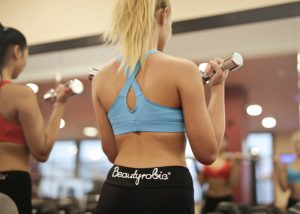
High-intensity interval training combines short bursts of high-intensity exercise, with slow but active recovery phases. The workout helps you maintain 85–100 percent of your maximum heart rate.[5] In addition, the benefits of HIIT workouts last long afterward.
Compared to other forms of aerobic exercise, HIIT delivers the same results in less time. As a result, it is easy to master once you’ve determined what exercise activity you want to start with. In fact, a HIIT style workout can be applied to nearly any form of exercise, meaning you are more likely to stick with it if you are doing something fun!
Fun fact: HIIT actually comes from the Tabata Protocol, researched in Japan in response to their national skating team’s unique training regimen in the 90s.[6]
HIIT burns more fat and calories than regular aerobic workouts
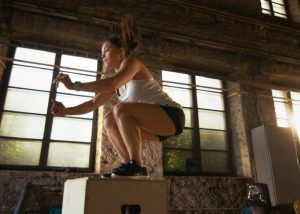
During high-intensity interval training, your body will produce high levels of ATP (adenosine triphosphate) in order to fuel your muscles.
To clarify, think of your body like the engine of a car. It stays warm after you turn off the engine. This is called the EPOC (post-exercise oxygen consumption) or the afterburn effect. Basically, EPOC allows you to still burn calories during recovery. Research has highlighted that the greater the intensity of a workout, the greater the EPOC.[7] The implication is that you don’t necessarily need to have a long workout to increase EPOC — you can also increase the intensity of a workout (just like HIIT does!).
HIIT helps build muscle
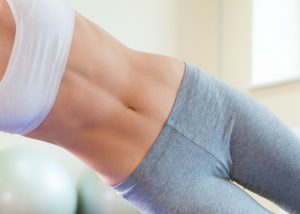
High impact strength exercises performed during the recovery period tear down muscle tissue. As a result, the body is forced to rebuild new muscle tissue. Thankfully, this is an advantage. As we age, we tend to lose muscle mass. Furthermore, we lose the strength and function of our muscles.[8] Muscle inactivity continues to weaken our muscles. However, by building new muscle tissue, the weakening can be avoided. There aren’t many drawbacks to a HIIT program.
Now that you know the answer to what is HIIT, does it truly deliver?
What Are the Benefits of HIIT?
The benefits of HIIT are remarkable. It is important to realize that there are mental health benefits as well as physical advantages to these burst workouts. Here is an overview of some of the top benefits of HIIT:
It Supports Healthy Weight Loss

What is HIIT besides fast and fun? It is also an effective fat burner. According to a study at Chang Gung Memorial Hospital in Taiwan, in a study of 18 participants (ten female), the benefits of a HIIT program on the mental and physical health of patients were measured and recorded. There were marked improvements in body mass index (BMI), hypertension, and resting heart rate.[9]
Researchers from the University of New South Wales discovered that women who performed three HIIT sessions every week lost as much as 7.3 pounds by the end of 15 weeks. Women who achieved 40 minutes of moderately intense exercise three times per week actually gained almost three pounds over the same period of time.[10]
It Offers Anti-Aging Benefits
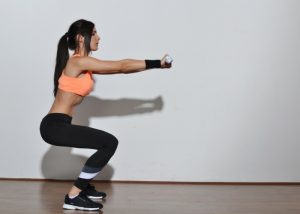
As we age, our bodies naturally change. However, by implementing a HIIT training program, you can slow down the aging process. Studies have shown that our cognitive processes weaken as we get older.[11] HIIT workouts help to prevent that. Just by moving, we activate our brainpower and fine motor skills. It takes effort from the brain to sustain the movement.[12] Therefore, like any other muscle, HIIT gives our brain a workout and strengthens our brainpower.
It Helps Lower Blood Pressure
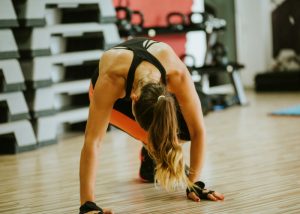
In addition to helping you lose weight and feel younger, HIIT workouts can also help lower blood pressure. A 2016 study on HIIT shows that after eight weeks of exercise, there was a significant reduction of blood pressure in the participants.[13] If you are overweight and need to course-correct your blood pressure, HIIT is the way to go.
It Improves Blood Sugar Levels
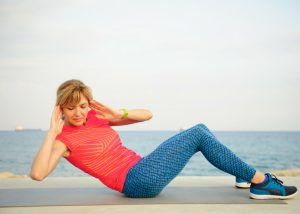
The perfect way to lose weight and naturally lower your blood sugar is through exercise. Specifically, you should focus on HIIT exercises. In less than twelve weeks, a group of overweight women reduced their blood sugar levels.[14] Think about it this way: taking part in a HIIT program just over the summer will improve your fitness levels and your blood sugar.
Short Workout Times

A point often overlooked is that so many of us just don’t have time for a long workout. The good thing is, HIIT workouts can be as short as 20-30 minutes. A recent study in the Journal of Diabetes Research found that 12 weeks of moderate-intensity and high-intensity aerobic training were equally effective in reducing abdominal fat in women.[15] With this in mind, HIIT is a superior method for weight-loss for busy women.
You Don’t Have to Change Your Diet
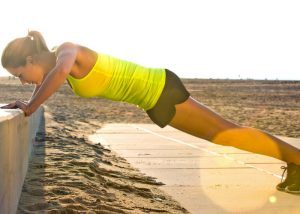
If you aren’t convinced that HIIT is for you yet, how about this? HIIT for weight loss was a welcome side effect as test subjects lost an average of three pounds over an eight-week testing period. The best part is that these results were not due to a change in eating habits.[16] While it is important to always make healthy choices and to eat in moderation, adding HIIT to your daily routine can offset an extra slice of cake every now and then.
It is a Natural Anti-Depressant
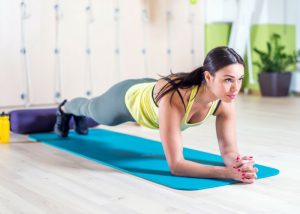
In one study, depression and anxiety levels decreased significantly and patients even had a higher “perceived enjoyment” after HIIT exercises.[17] For this reason, people are more likely to stick to a HIIT program than other forms of exercise.
HIIT for Beginners: Tips for Getting Started
One of the benefits of HIIT is that it can be done in the comfort of your own home with little or no equipment. Let’s dive right into a list of simple tips and tricks to get you started on the path to becoming a HIIT rockstar!
1. Learn your maximum heart rate zone
An easy calculation is to subtract your age from 220.[18] For example, if you’re 30 years old, you’ll subtract 30 from 220, which equals 190. Your maximum heart rate is 190 beats per minute. In other words, keeping your heart rate around this number gives you a high-intensity workout without putting a strain on your heart.
You can try using two fingers to track your heartbeat. If you have trouble with that, consider any number of wearable fitness trackers on the market today. Most of them will have a heart rate monitor of some kind to help you out. Additionally, there are heart rate trackers on lots of different gym equipment if you do decide to go that route.
2. Ease into HIIT gently
A HIIT for beginners workout might look like taking a staircase two steps at a time and then taking them one by one. If you’re a cyclist, you can alternate between a max speed for 20 seconds, then recover for 20 seconds and repeat the intervals for 10 to 20 minutes.
3. Use a timer
Make sure to time your intervals. You can do this with a stopwatch, your phone, or even a tablet for a bigger display that you can’t miss.
4. Don’t push too hard
If you are easily able to hold a conversation with someone while doing a HIIT workout, it might be a little too easy. If you can’t talk at all because you are so out of breath, you are pushing too hard. You should be able to talk to someone, but it should be a little difficult.
5. Pick a partner
If you don’t want to work out alone, exercise with a friend. You should alternate your intervals so that while you are doing the hardest part of the workout, your friend can give you encouragement or even keep time for you.
6. Always warm up and cool down
It is important to perform proper warm up and cool down exercises before and after your workouts. This will prevent injury and muscle soreness.[19] The less sore you are after a workout, the more likely you will be to repeat the exercise.
What is HIIT good for if only the experts can practice it? With this in mind, remember that anybody can enjoy the benefits of HIIT and achieve amazing results. Ultimately, it does not matter what your experience or fitness level is.
How to Create Your Own HIIT Program
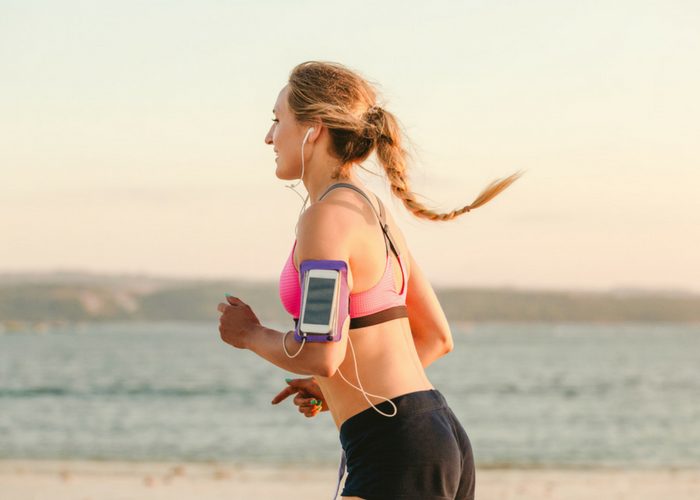
A variety of HIIT for beginners workouts are available online designed to fit your time, budget, and fitness level. As always, check with your doctor to make sure you are heart-healthy enough to begin a HIIT program. All things considered, torching those pesky pounds will be fun and easy once you start and stick with your HIIT workout program!
What is HIIT good for if beginners can’t get in on the action? Here is a HIIT for beginner’s workout that can be performed anytime and anywhere. There is a useful formula for creating your own HIIT program.
1. Choose your intensity level
Think about how intense you want your workout to be. If you aren’t sure, try aiming for 80% to 95% of your maximum heart for the HIIT intervals.
2. Set your total workout time
Don’t forget to account for warming up and cooling down. A good minimum workout time is 20 minutes, but you can go as high as 30.
3. Choose your interval times
If you are a beginner, here is an example four-week plan:
- First week: 30 seconds of HIIT with a 60 second recovery period
- Second week: 30 seconds of HIIT with a 45 second recovery period
- Third week: 30 seconds of HIIT with a 30 second recovery period
- Fourth week: 45 seconds of HIIT with a 30 second recovery period
Here is an example 20 minute HIIT workout you could do for week one:
- 5 minute warm-up
- 30 seconds of burpees
- One minute of strength training (e.g. Bicep curls)
- 30 seconds of jumping jacks
- One minute of strength training (e.g. Lunges)
- 30 seconds of high knee running
- One minute of strength training (e.g. Squats)
- 30 seconds of mountain climbers
- One minute of strength training (e.g. Tricep curls)
- 30 seconds of burpees
- One minute of strength training (e.g. Bicep curls)
- 30 seconds of jumping jacks
- One minute of strength training (e.g. Lunges)
- 5-6 minute cool-down
If you would rather start out with a 10 minute HIIT workout, simply cut the example by half. The best part is that as you become stronger, you can expand this program to a 30 minute HIIT workout.
4. Set the frequency of workouts
To begin with, aim to do three or four workouts a week. Make sure you have sufficient rest periods in between workouts so your body can recover.
Sample 20 Minute HIIT Workout: HIIT Yoga
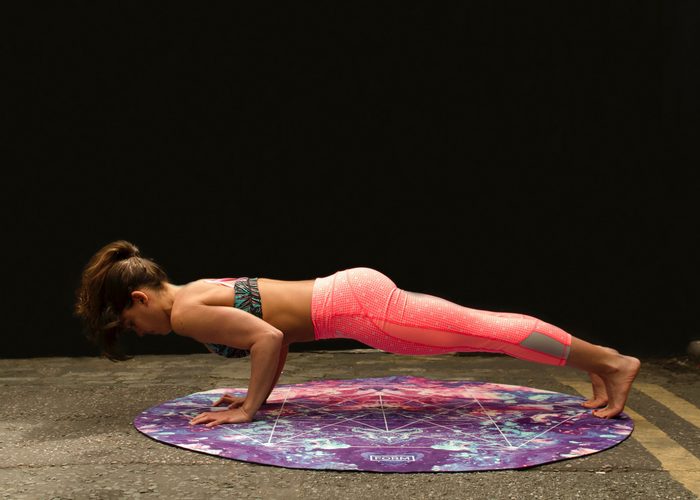
HIIT Yoga | 20 minutes
- Start in tabletop position.
- Then, move into cat-cow pose for 10-15 breaths.
- Raise your knees and move into floating position.
- Do 10-15 shoulder taps with opposite hands.
- Now move into downward-facing dog for 5-10 breaths.
- For your first HIIT burst, do alternating mountain climbers for 30 seconds.
- Return to tabletop pose and begin again.
Sample 30 Minute HIIT Workout
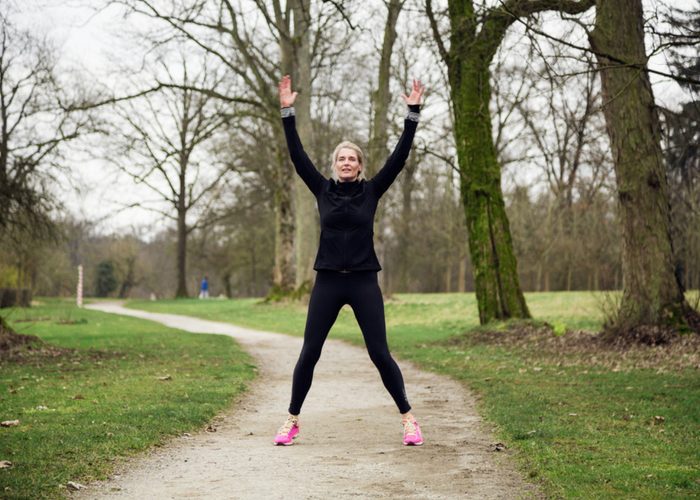
The At-Home Fat Blasting HIIT Workout | 30 minutes
- Begin with a 10-minute warm up by walking briskly.
- Stop and do 45 jumping jacks (which should take about 45 seconds).
- Rest for 15 seconds.
- Repeat 45 jumping jacks and 15 seconds of rest two more times.
- Walk for 3 minutes.
- Stop and do squat jumps for 20 seconds.
- Now take a 10-second break.
- Do squat jumps for another 20 seconds and then take a 10-second break.
- Do this for a full 3 minutes and then start again.
How to Stay Motivated with Your HIIT Program

Now that you know what HIIT is and how to go about creating your own custom HIIT workout, how do you keep yourself motivated to follow through?
Just remember, only two weeks of inactivity is enough to reduce muscle mass, slow your metabolism, and erase all your hard work.[20] Furthermore, a successful exercise program not only promises results but allows for convenience and variety. But, if your resistance is more mental than physical, try these killer tips for those days when you feel like you just can’t even.
1. Develop a solid routine
Cassy Velez, a NASM Certified Personal Trainer and ACE Certified Group Fitness Instructor says, “I think the most integral thing that someone can do for themselves to make sure that they stay motivated over time and reach their goals is to set their goals properly from day one. If you focus on the process, you’ll almost always hit the goal anyway because you’re taking the necessary steps to get there.”[21]
For instance, focus on simply getting to the gym for one class instead of obsessing how you’ll lose those last 15 pounds. Forget about trying to plan an entire month of classes. Just start with one class. Build a routine around that one or two gym sessions a week.
Trying to squeeze in another HIIT class after work? Keep your gym bag in the car and have a protein snack minutes before you leave the office so you are ready to get your sweat on!
2. Find yourself an accountability partner
HIIT for beginners doesn’t have to be stressful. If you’ve had a long day, you’re feeling sad, or you’re just plain dragging your mental feet, an exercise buddy may be just the thing you need. Another key point is knowing you don’t have to engage in the same exact activities at the same time. Instead, keep in touch and share tips for staying on track.
Basically, being liable to another person makes all the difference between getting off the couch and on the right track. Set goals together and reap the rewards of your hard work. Teamwork never looked or felt so good!
3. Find some classes that excite you
For example, find the right gym and group exercise classes. Sometimes, the only thing you need is the vibe and visual cue of the crowd. Knowing that your favorite class or music or instructor is only there on certain days at certain times can be a powerful stimulus. Strike up a convo with that person who is always at that class too, and now you have a new reason and a new friend to show up for!
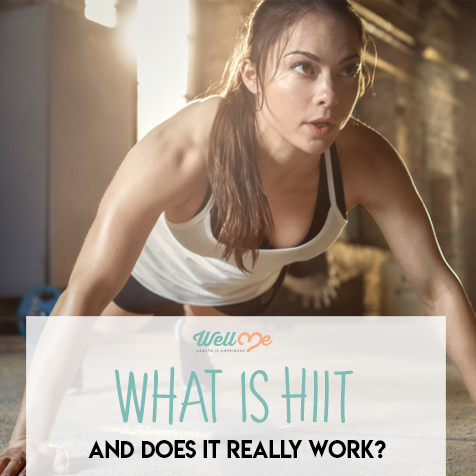
Time To Get Started With HIIT!
What is HIIT and what is it not? HIIT is certainly not boring. Research proves that anybody can follow a HIIT program and achieve amazing results, despite your fitness level or lack of experience. It’s smart to do your research and adopt a workout routine that works in all areas of your life. Whether you like to run, swim, skate, or dance, the benefits of HIIT will keep you fit and happy in the long run.
References
- [1] https://journals.lww.com/acsm-healthfitness/fulltext/2013/11000/Now_Trending__Worldwide_Survey_of_Fitness_Trends.5.aspx#O5-5
- [2] https://www.ncbi.nlm.nih.gov/pubmed/21311363
- [3] https://www.ncbi.nlm.nih.gov/pubmed/28932907
- [4] https://www.ncbi.nlm.nih.gov/pmc/articles/PMC5157059/
- [5] https://www.ncbi.nlm.nih.gov/pmc/articles/PMC5790162/
- [6] https://www.healthyway.com/content/go-on-hiit-me/
- [7] https://www.ncbi.nlm.nih.gov/pubmed/17101527
- [8] https://www.ncbi.nlm.nih.gov/pmc/articles/PMC2804956/
- [9] https://www.ncbi.nlm.nih.gov/pmc/articles/PMC4450659/
- [10] https://www.ncbi.nlm.nih.gov/pmc/articles/PMC2991639/
- [11] https://www.ncbi.nlm.nih.gov/pmc/articles/PMC4640257/
- [12] https://www.ncbi.nlm.nih.gov/pmc/articles/PMC4640257/
- [13] https://www.ncbi.nlm.nih.gov/pubmed/20448634
- [14] https://www.ncbi.nlm.nih.gov/pubmed/27774458
- [15] https://www.ncbi.nlm.nih.gov/pmc/articles/PMC5237463/
- [16] https://www.ncbi.nlm.nih.gov/pmc/articles/PMC4450659/
- [17] https://www.ncbi.nlm.nih.gov/pmc/articles/PMC4450659/
- [18] https://www.livestrong.com/article/78040-calculate-maximum-heart-rate/
- [19] https://www.ncbi.nlm.nih.gov/pmc/articles/PMC3588693/
- [20] https://www.ncbi.nlm.nih.gov/pmc/articles/PMC3276215/
- [21] https://www.healthyway.com/content/yes-you-can-fitness-motivation-tips-for-days-when-you-just-cant-even/


